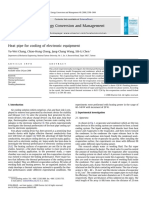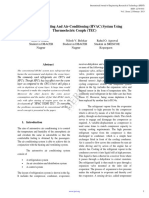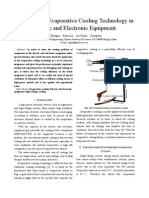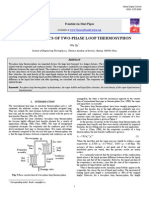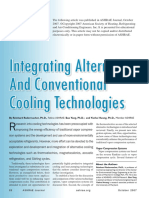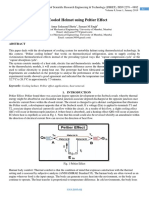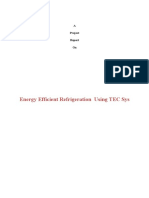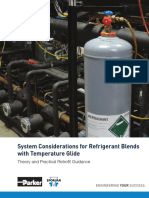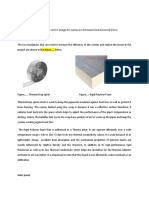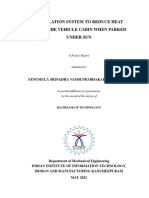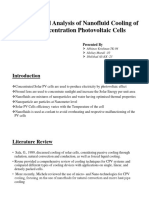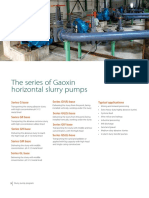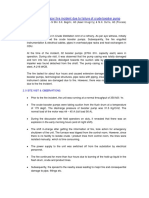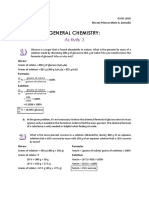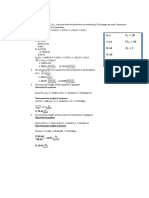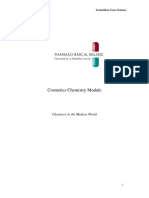0% found this document useful (0 votes)
91 views20 pagesStudy of A Loop Thermosyphon For Thermal Control of Aircrafts
The document discusses the design and testing of a loop thermosyphon for thermal management of aircraft avionics. It describes how avionics generate significant heat that must be removed, and how a loop thermosyphon uses passive two-phase heat transfer to transfer heat without a pump. The designed loop thermosyphon uses a stacked copper evaporator and condenser, with experiments testing different heat source placements and fluid fill levels. Results showed the device effectively transferred heat, with temperatures under 61°C and startup times under 200 seconds.
Uploaded by
aktk1234Copyright
© © All Rights Reserved
We take content rights seriously. If you suspect this is your content, claim it here.
Available Formats
Download as PDF, TXT or read online on Scribd
0% found this document useful (0 votes)
91 views20 pagesStudy of A Loop Thermosyphon For Thermal Control of Aircrafts
The document discusses the design and testing of a loop thermosyphon for thermal management of aircraft avionics. It describes how avionics generate significant heat that must be removed, and how a loop thermosyphon uses passive two-phase heat transfer to transfer heat without a pump. The designed loop thermosyphon uses a stacked copper evaporator and condenser, with experiments testing different heat source placements and fluid fill levels. Results showed the device effectively transferred heat, with temperatures under 61°C and startup times under 200 seconds.
Uploaded by
aktk1234Copyright
© © All Rights Reserved
We take content rights seriously. If you suspect this is your content, claim it here.
Available Formats
Download as PDF, TXT or read online on Scribd
/ 20
